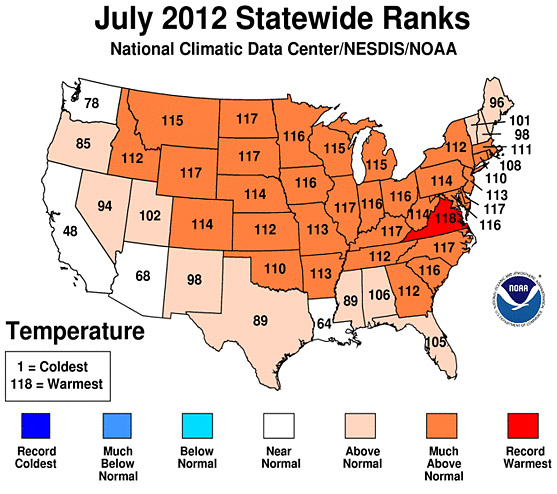Where'd the flash drought come from, and why did it get so bad, so fast, last month? A new report from the NOAA, finding that this July was the hottest month, nationwide, in recorded history, shows how deeply it impacted Illinois (the scale goes from 1-118 because that's how far NOAA's records go back):

While only one state set a monthly record for heat, many states approached their record (it was the 117th coldest July on record for Illinois, for example, out of 118). So it was hot everywhere. Precipitation was a different story:

South of Illinois was wet: well above normal in most of the Mississippi Valley states. But right in the heartland proper, Nebraska, Iowa, and Illinois had a near-record dry month. The combination of the two led to a rapid expansion in drought conditions during July:
.gif)
And yet more records:
According to the July 31, 2012, U.S. Drought Monitor (USDM), 62.9 percent of the contiguous U.S. was experiencing moderate to exceptional drought at the end of July. This is an increase of about 6.9 percent compared to the end of June. The maximum value of 63.9 percent reached on July 24 is a record in the 13-year history of the USDM.
[snip]
The Primary Corn and Soybean Agricultural Belt, hard hit by drought, experienced its eighth driest July, third driest June-July, and sixth driest April-July (growing season) in the 1895-2012 record.
According to the Palmer Drought Severity Index, whose record spans the 20th century, about 57 percent of the contiguous U.S. was experiencing moderate-to-extreme drought in July. The last drought this extensive was in December 1956 when about 58 percent of the nation was in moderate-to-extreme drought.


